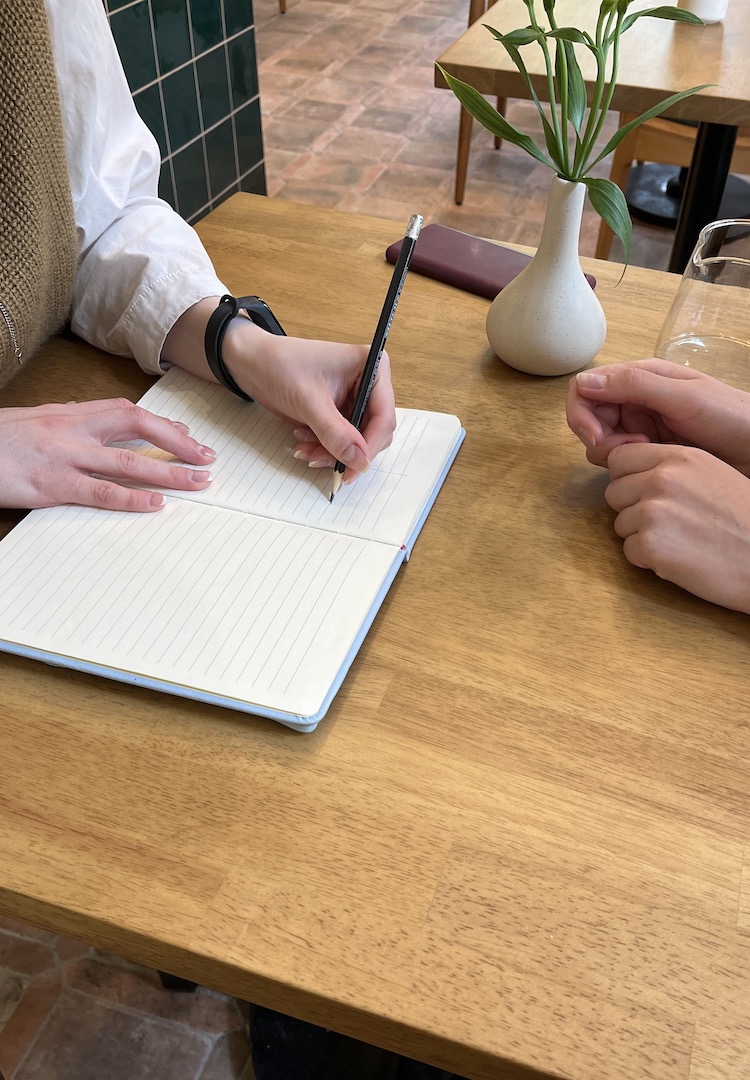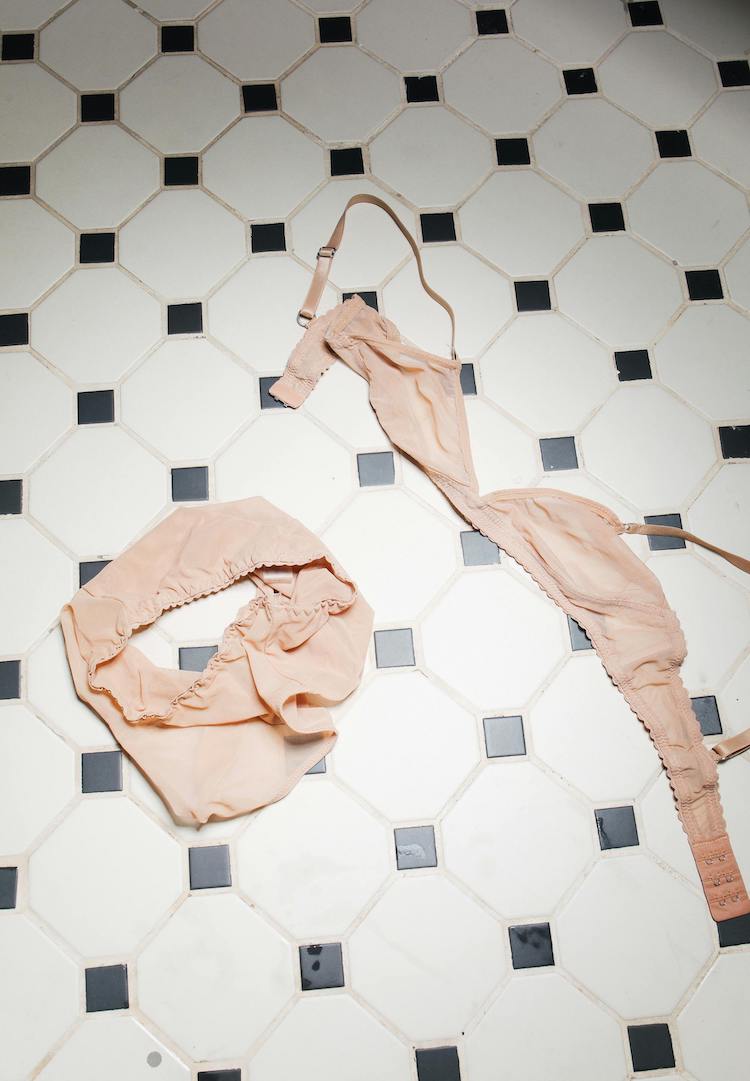How do you set your freelance rates? 5 Australian creatives explain
PHOTOGRAPHY BY JASON HENLEY
WORDS BY GENEVIEVE PHELAN
Advice from those in the know.
If you’re a freelancer or a creative doing a bit of extra work on the side of a full-time gig, chances are you’ve got all hot and sweaty over an email regarding rates. Unfortunately, there’s no exact guidebook on how much a blog post or web copy should pay.
I’ve had a few DMs over the years asking how much money is considered fair to quote for a freelance article, or how to go about setting an hourly rate as a budding writer. It’s a murky subject – there’s no right or wrong (well, sometimes there is some wrong) but there’s often a whole lot of underselling and uncertainty going on behind the scenes before a creative gets their price right.
Looking to procrastinate in a productive way? Subscribe here and we’ll send more great reads straight to your inbox.
That’s why we’ve corralled a crew of Australian and New Zealand freelancers to help you know your (literal) worth and communicate it clearly to a client. No more self-swindling in 2021.
Liam Sharma, writer and editor of Sauce
View this post on Instagram
How do you quantify or monetise your own worth as a writer?
I have a standard rate that I charge out. If a client can’t justify my rate, I let the gig pass. I don’t really negotiate on my rates. I’ve been in the PR/marketing realm for over seven years – over time, I’ve learnt what I’m worth and what I think is fair.
How did you first go about setting your freelance rates? Who did you turn to for advice (if anyone)?
At first, I did market research and literally just spoke to as many people as possible in a similar occupation. Ask people, you’ll be surprised how willing some people are to help other freelancers start out. We all understand the hustle.
How do you know when it’s time to adjust your rates? And how do you do this tactfully?
You have to move with the market. I think the moment you feel like you’re doing yourself a disservice, you should adjust your rates.
What do you do (if anything) when a client undermines or challenges your rates?
To be honest, this hasn’t happened to me as much as some of my other freelancer friends. If someone undermines me, I won’t work with them from the get-go. I can’t start a project off with a bad taste in my mouth.
What’s the easiest mistake to make when setting your freelance rates?
Over-service and undercharge because you’re worried about what a client might think of you.
Sabina McKenna, writer and curator
View this post on Instagram
How do you quantify or monetise your own worth as a writer?
I have different rates for different jobs. Sadly, the more colourful writing jobs out there don’t have as much budget as I need to justify the time spent, so I can usually only commit to the fun stuff when I have more free time. It all depends on the job though.
If there is an opportunity that comes up that I am truly passionate about or excited about I am happy to do it for the love. I want to use my skill to give back and advocate for things that are important to me as well. But I always think of this Venn diagram they showed us in uni, which shows a cross over between love, exposure (or experience), and money. Basically the rule of thumb is you must have two out of three to make it worthwhile.
How did you first go about setting your freelance rates? Who did you turn to for advice (if anyone)?
I looked at Nava rates online, which are a great resource for creatives. I also asked other people doing similar work what their rates are. That seemed scary at first – money talk is so taboo – but it shouldn’t be. It’s important to have income transparency.
How do you know when it’s time to adjust your rates? And how do you do this tactfully?
With creative work it really depends on the job and the budget going. I think the way I adjust my budget is by raising the lowest amount I will do something for and that changes usually every one to two years. But again it depends, sometimes I think of how much of that particular work I have been doing and if my experience has increased significantly. That’s the best sign that you’re due for an increase.
What do you do (if anything) when a client undermines or challenges your rates?
I am usually just honest! Sometimes just saying you can’t justify the time for the money, because you’re busy (or just because you can’t) can go a long way. If you want people to pay you what you believe you are worth it’s important to stop doing work for anything less than that. Sadly it’s a huge problem in the industry. Creative work is severely underpaid (writing in particular) and people have no shame in advertising roles for minimum wage or less than, despite it being a highly skilled job.
What’s the easiest mistake to make when setting your freelance rates?
Actually quantifying the time it will take. Also letting people add things into the workload without adding to the rate – stick to the contract!
Emma Kalfus, stylist and brand consultant
View this post on Instagram
How do you quantify or monetise your own worth as a stylist?
I generally set day rates or half-day rates, and try to stick to them as best as possible. Sometimes you do end up having to go back and negotiate more and sometimes you do eat into your own time, but that’s all part of the freelance world.
How did you first go about setting your freelance rates? Who did you turn to for advice (if anyone)?
I learnt from the people I assisted and also turned to producer friends in the industry for guidance.
How do you know when it’s time to adjust your rates? And how do you do this tactfully?
I always analyse the brief and what’s involved in the job, like how many talent, looks, whether or not it’s straight fashion, or fashion and lifestyle (props) etc., and try to gauge the client’s expectations at the start. It’s a very tricky process, but you get there with practice.
What do you do (if anything) when a client undermines or challenges your rates?
I’ve learnt how to say no to jobs, or push back if I feel undervalued. It’s always a negotiation, and I quite like that stage in the process as long as everyone feels like they are being paid/charged fairly in the end. There is something quite empowering about being able to say no when you feel like you are worth more, however.
What’s the easiest mistake to make when setting your freelance rates?
I think at the beginning of your career you say yes to a lot of things that are more work than you expect and are paid for. I found that once I set a minimum I was prepared to work for (nothing less), it was a lot easier to negotiate and therefore I felt like I valued myself higher, as did clients.
Melissa Mason, writer, editor and host of the Jeans & A Nice Top podcast
View this post on Instagram
How do you quantify or monetise your own worth as a writer?
There’s a fine line between knowing your worth and backing yourself, and being aware of the state of the industry. But I do think the fundamentals are: your experience in the industry, how clean your writing is (if you’ve been getting barely any edits from editors, it’s very clean!) and how much work will go into a certain piece.
How did you first go about setting your freelance rates? Who did you turn to for advice (if anyone)?
I had NO idea what I was doing. I asked a bunch of women I either knew through friends or the industry, who I knew were long-time freelancers, how to set my rate. I was also lucky enough to have briefly worked commissioning content at a previous role before I started to freelance, so I knew a little about what a usual rate was.
How do you know when it’s time to adjust your rates? And how do you do this tactfully?
If your content is generating lots of engagement for that site, or the workload expected is increasing are my two big ones. Lots of interviews or research involved in a piece should garner a higher freelance rate, and if your content is doing really well for a website, you can usually push for higher rates. Your own following can also attribute – if you end up with a big, engaged social following and are pushing your stories out through your channels, you can use that as leverage. I think as with anything, being polite is the way to do this tactfully.
What do you do (if anything) when a client undermines or challenges your rates?
I just wouldn’t work with them. I suppose if it was challenging the rate, I determine if I really want that job (even for the reduced rate). I’ve done projects where I’ve been severely underpaid for my experience level, but the benefit of having my name on that content, or having it in my portfolio outweighed the monetary value. Essentially, what is the overall value of that project – the only time I compromise on rates is if there’s something non-monetary in it for me that I want, whether that’s exposure or my name on a site I want to be visible on.
What’s the easiest mistake to make when setting your freelance rates?
The biggest mistake I see is underselling or overselling yourself. That’s why I think it’s important to ask other freelancers how to set your rate – ideally people you trust [like] mentors or experienced freelancers who know your experience, where you’ll get an honest answer. They’ll be able to tell you a ballpark, but also how it can fluctuate depending on type of content.
Alex Drewniak, photographer
View this post on Instagram
How do you quantify or monetise your own worth as a freelancer?
For me it comes down to experience, qualification and what equipment you use.
How did you first go about setting your freelance rates? Who did you turn to for advice (if anyone)?
The photography community is very supportive and honest, and I speak with my peers to ensure we’re not underquoting clients and making sure we’re setting an industry standard. I still call a few photog friends if I’m feeling unsure. I also had a mentor, Lucas Dawson. He’s a well-established Australian photographer who guided me in the right direction. His experience was invaluable to me. He taught me how to set up the business side of my creative job, and [I] feel like this [is] sometimes overlooked.
How do you know when it’s time to adjust your rates? And how do you do this tactfully?
You know it is time to amend your rates when you’re in demand, and literally can not physically fit any more clients in. I have very honest conversations with clients initially and say: “This rate is subject to change in the future and we will re-evaluate when the next job comes up.” I then detail the variables that have changed, so that it doesn’t come as a surprise. Open conversation from the get go is very important.
What do you do (if anything) when a client undermines or challenges your rates?
Firstly, don’t fear a rate being challenged. Ultimately, you’re in business. People will always try to negotiate. See this as your opportunity to explain your worth, and how the service you are providing will help them in the long run. And don’t be afraid to lose a job if you’re standing up for yourself as a creative freelancer. If a client undermines me, I politely just say, “Sorry we don’t see eye to eye on this, I can a) help you find someone of the qualification more fitted to your job, or b) wish you all the best.”
What’s the easiest mistake to make when setting your freelance rates?
Thinking that if you undercut someone you’ll be a shoe-in for a client. This behaviour is really damaging, and might make you a quick buck, but word spreads in these communities and people respect integrity.
For more information on getting started as a freelancer in Australia, head here.













